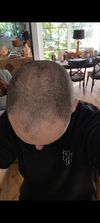community 4 years on finasteride update!
A 25-year-old has been using finasteride for four years to treat hair loss, starting at age 21, and has experienced significant hair thickening without side effects. Others in the conversation share varied results and experiences with finasteride, with some considering adding minoxidil to their treatment.
